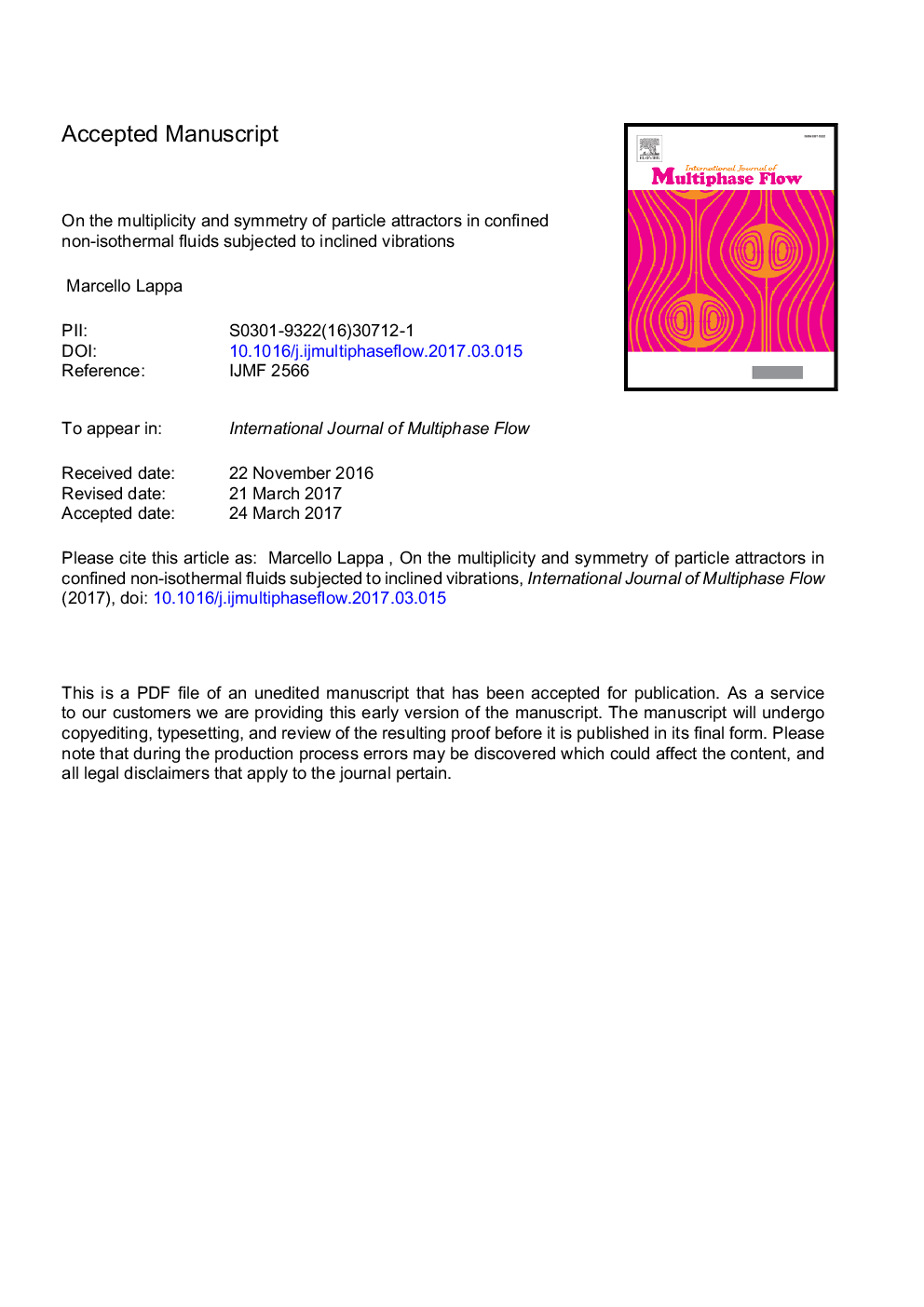| Article ID | Journal | Published Year | Pages | File Type |
|---|---|---|---|---|
| 4994992 | International Journal of Multiphase Flow | 2017 | 27 Pages |
Abstract
We investigate the relationship between the motion of solid particles and related clustering dynamics under the combined influence of a large-scale convective flow and vibrations-induced small-scale displacements in microgravity conditions. Such a study is motivated by the relatively recent discovery of a new class of particle attractors for which thermal and inertial effects play a fundamental role whereas particle-to-particle interactions are not essential. The key aim is to expand the set of predictive links between flow properties and particle behavior identified in the author's earlier work (Phys. Fluids, 26(9), 093301, 2014). Insights are sought from consideration of two archetypal settings, both originating from the classical problem of a differentially heated cubic cavity, which in one case is subjected to vibrations contained in a plane parallel to one of the insulated walls (i.e. having a component in the direction parallel to the temperature gradient) and in the other experiences periodic accelerations arbitrarily oriented in space. The present study reveals that the multiplicity of the particle attractors, previously thought to be a universal number (NÂ =â2 according to earlier studies), is not a constant. The two distinct particle attractors seen in past investigations can undergo “coalescence” and exist as a single attractor over a relatively wide range of conditions. Moreover, in addition to the ellipsoid, cylinders and conical surfaces, other shapes of the attractors, such as amphora-like or saddle-horse paraboloid structures, become possible when the vibrations are inclined with respect to the adiabatic walls.
Keywords
Related Topics
Physical Sciences and Engineering
Chemical Engineering
Fluid Flow and Transfer Processes
Authors
Marcello Lappa,
